In the aftermath of WWII, NATO saw a growing threat from the Soviet submarine fleet. Nuclear weapons were an attractive means of solving this problem, as they offset the inaccuracy caused by the "dead time" between the target being located and the weapon reaching it. The US began with nuclear depth bombs (NDBs) deployed from carrier or shore-based aircraft and helicopters. But submarines also got nuclear weapons for use against other submarines, in the form of the ASTOR torpedo and the SUBROC standoff rocket.
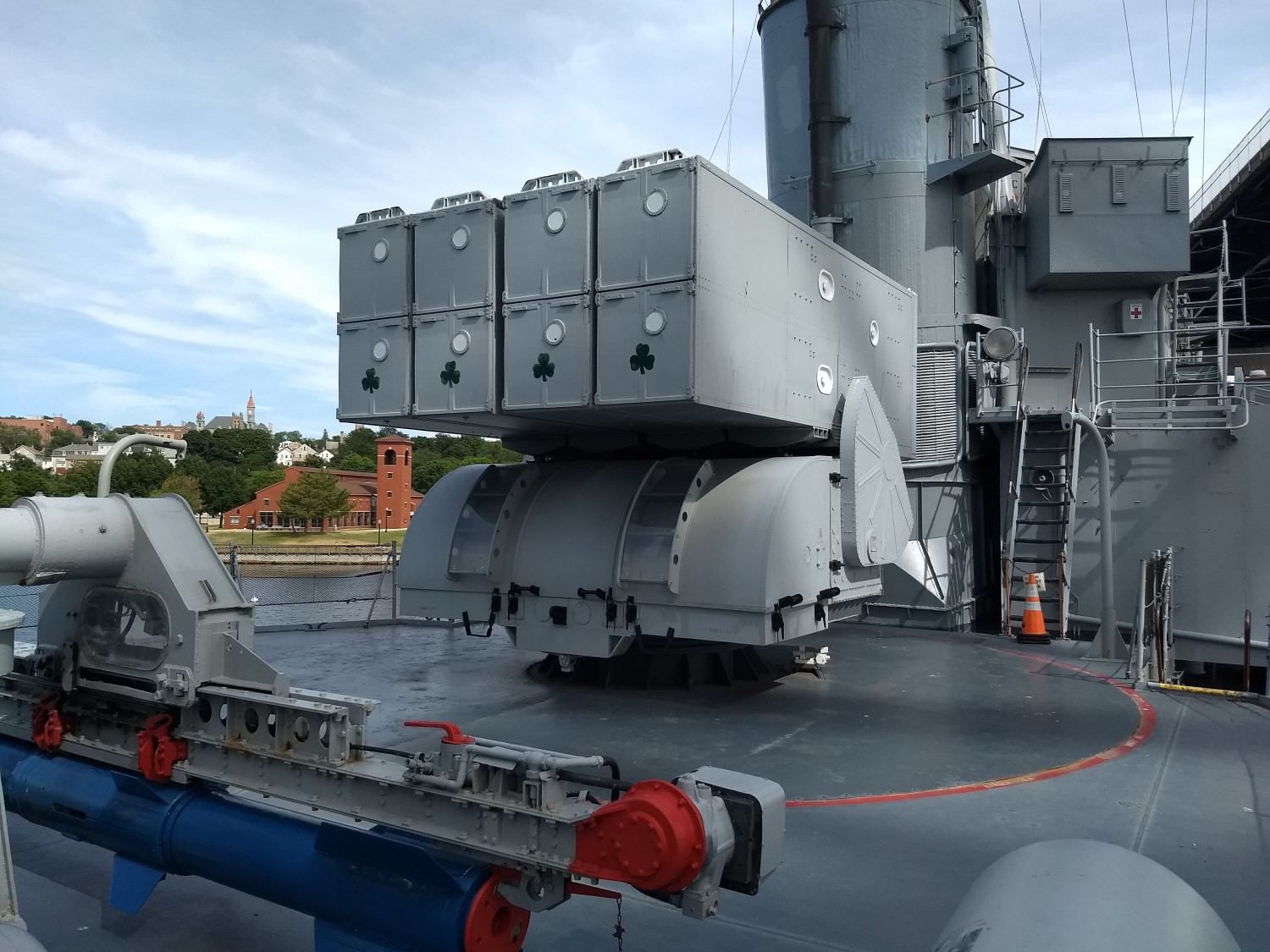
ASROC launcher aboard destroyer Joseph P Kennedy at Battleship Cove. Note the reload equipment and dummy rocket at lower left.
The surface fleet didn't want to be left out of the fun, and as simple NDBs were obviously ruled out due to risk of destroying the launching platform, they developed the anti-submarine rocket known as ASROC. ASROC carried either a W44 NDB, with a yield of around 10 kT, or a lightweight torpedo, either a Mk 44 or Mk 46. It was usually launched from an 8-round box launcher on deck, although some ships launched ASROC from rail launchers intended for SAMs instead. Each pair of cells would elevate individually to 45° for launch, with the rocket following a ballistic path. Range, to a maximum of 10,000 yards, was set by a timer which would separate the booster from the payload.1 If the payload was a torpedo, it would be lowered into the water via parachute, and begin to circle and hunt for the submarine. If it was the depth charge, it simply fell into the water and went off at the preset depth.
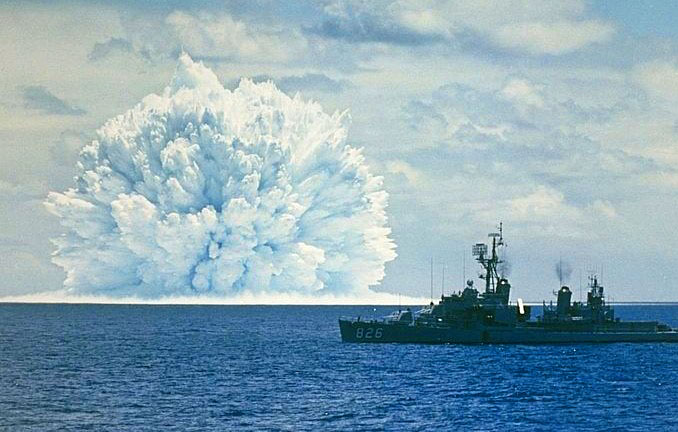
USS Agerholm with the results of the Dominic Swordfish test
ASROC was a phenomenal success, deployed on over 200 USN vessels, as well as ships of 13 other nations, although export customers only got the torpedo-carrying version. One full-scale nuclear ASROC test was conducted in 1962, a year after the system entered service, from the destroyer Agerholm. Most ships with ASROC also carried reloads, behind or below the launcher. Most of the time, the nuclear rounds were stored in these magazines. At least for the Spruance class destroyers, the typical loadout was four NDB rockets, a dummy rocket for training, and a pair of empty slots to allow the crew to unload torpedo round to make way for the nukes. Except when the ship was in the yard and all the ammunition had been offloaded, the magazine had to be guarded at all times to avoid giving away information about the presence or absence of nuclear weapons. Few mourned when the W44s were retired in 1989. Today, torpedo-carrying ASROC has been replaced by VL-ASROC, a longer-range weapon fired from vertical launch systems.
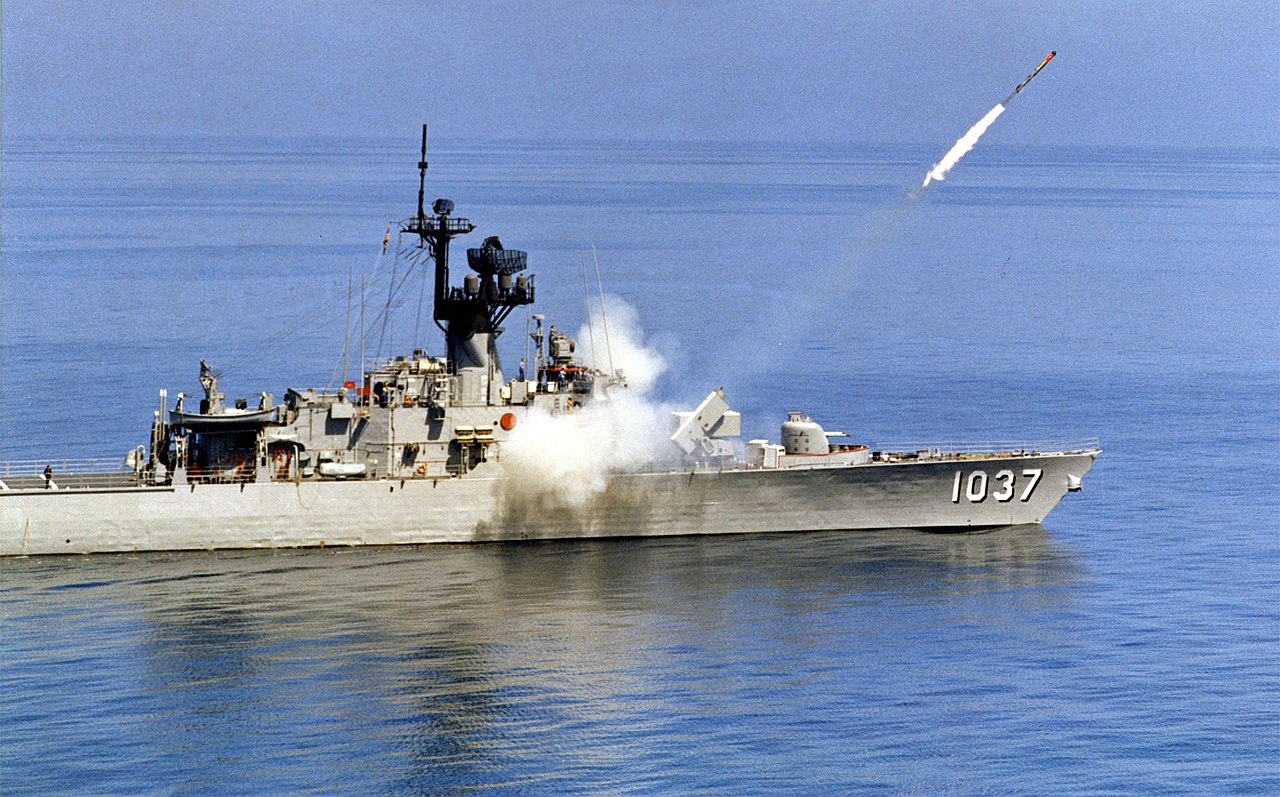
Frigate Bronstein fires an ASROC
In the 1980s, the USN looked to develop a new generation of nuclear weapons. The B57 would be replaced as both a bomb and an NDB by the new B90, while ASROC and SUBROC would both give way to the new Sea Lance missile, fitted with either a W89 nuclear warhead or a Mk 50 torpedo. The W89 was designed to be exceptionally thin, allowing it to sink quickly and reducing dead time, important again in the face of threats like the Soviet Alfa class. Sea Lance was to have a range of 50 to 100 nm, but the surface-ship version was cancelled in the mid-80s, and replaced by VL-ASROC. As the Soviet threat faded with the end of the Cold War, all of the weapons under discussion were cancelled, bringing to an end the saga of American nuclear anti-submarine weapons.
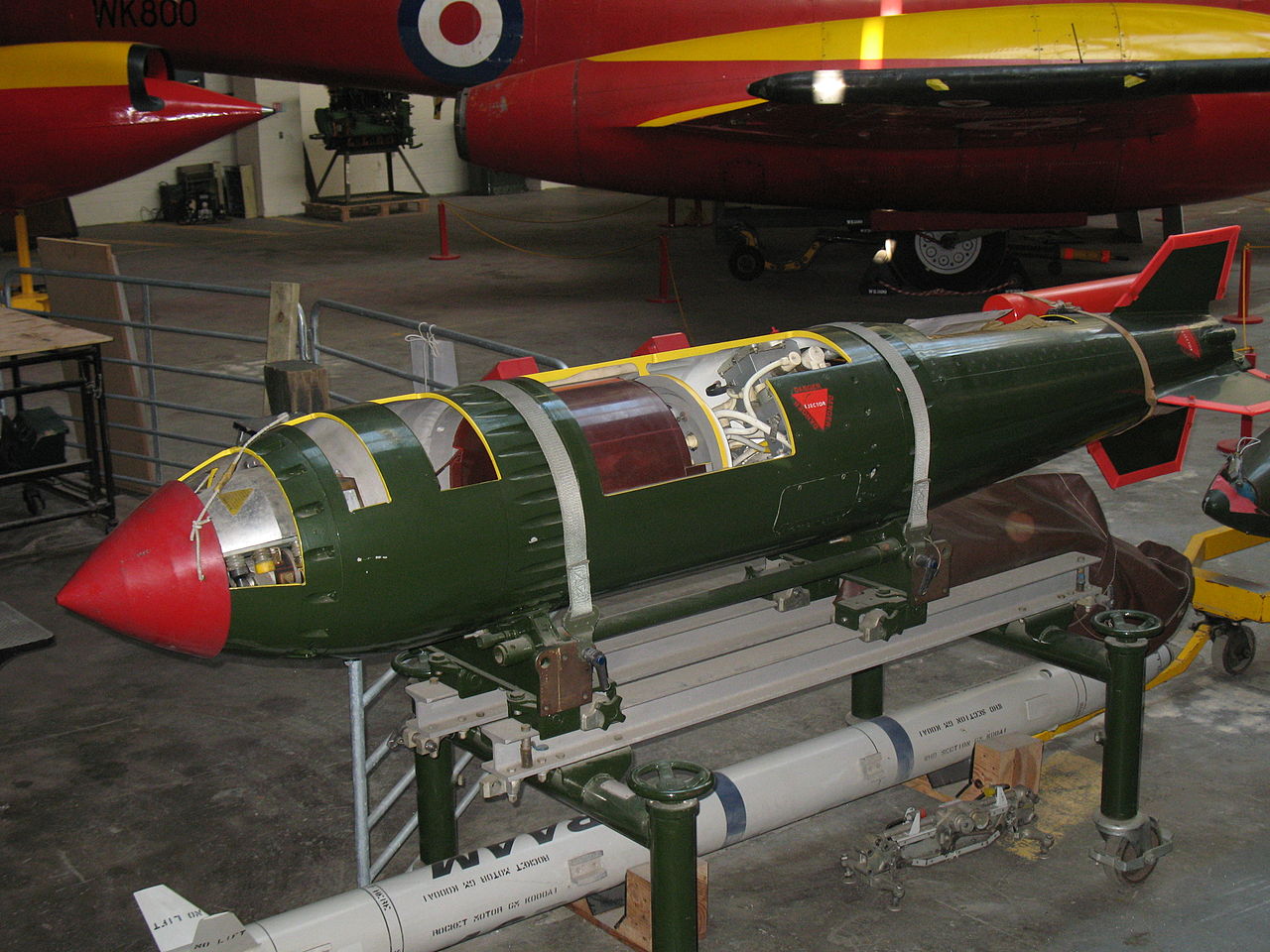
A cutaway of a WE.177A
Nor was the US the only country to take nuclear weapons to sea as part of their anti-submarine efforts. The British set up most of their WE.177 bombs as NDBs, and carried them not only aboard their carriers but also for use by helicopters on many of their frigates. The WE.177s became a serious problem in 1982, when Argentina invaded the Falklands, and the British dispatched their fleet to the South Atlantic. Both carriers, as well as frigates Broadsword, Brilliant, Coventry and Sheffield are reported to have had nuclear weapons onboard. This is unlikely to be true for the latter two ships, as they were Type 42s, and the underwater magazines required for nuclear weapons were one of the sacrifices made in the design of that class, at least according to Norman Friedman. As best we can tell, all were passed over to the replenishment ships that supported the fleet before they went into action. If the Type 42s did indeed have WE.177s, this was fortunate, as both Sheffield and Coventry were lost during the war. There's some uncertainty about the carriers, but the British maintain that the Treaty of Tlatelolco, establishing a nuclear-free zone in South America, was respected throughout.2
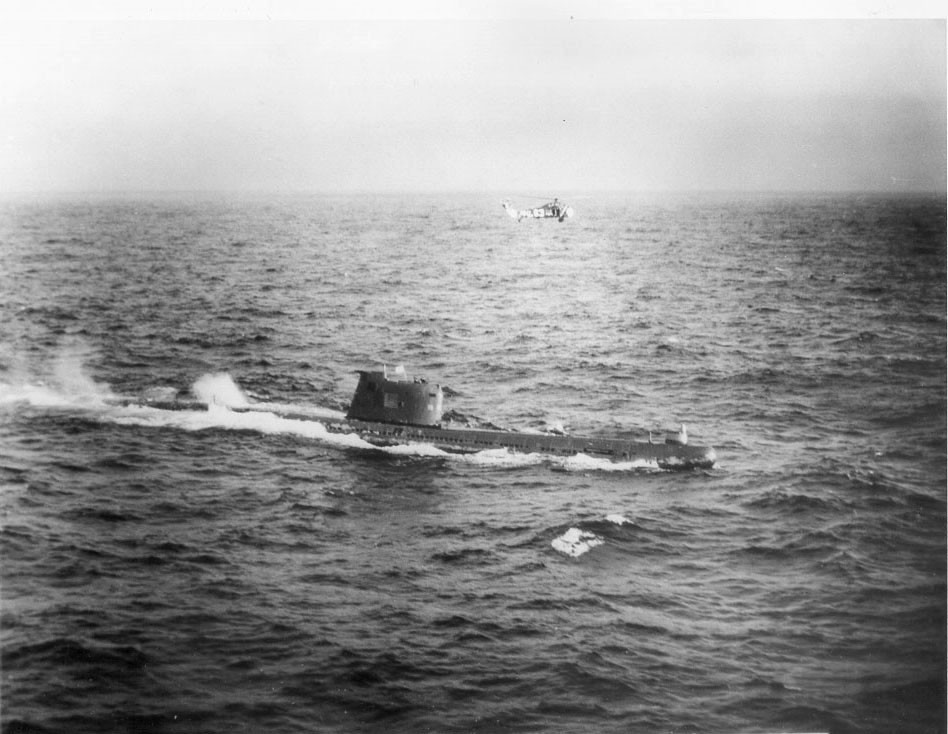
Submarine B-59 on the surface
The Soviet Union was also concerned about the threat of western submarines, and deployed nuclear weapons of its own to counter it. There isn't nearly as much detail available on their weapons as there is for the US and UK, but it appears they developed airborne NDBs in the late 50s, for deployment by various maritime patrol aircraft and anti-submarine helicopters.3 They also developed a nuclear torpedo, known as the T-5, which entered service in 1958. It appears to have been unguided, and was probably intended more to kill surface ships than submarines, although several discarded submarines were used as targets during testing. This weapon is best known for its role in the Cuban Missile Crisis. Several were aboard B-59, which was attacked by American destroyers, and whose captain came close to firing at them. The closest the Soviets came to something like ASTOR was the ASB-30, which wasn't so much a torpedo as a nuclear warhead for their existing torpedoes, which could be switched out with the conventional warhead at sea. It entered service in 1960, although details are sketchy.
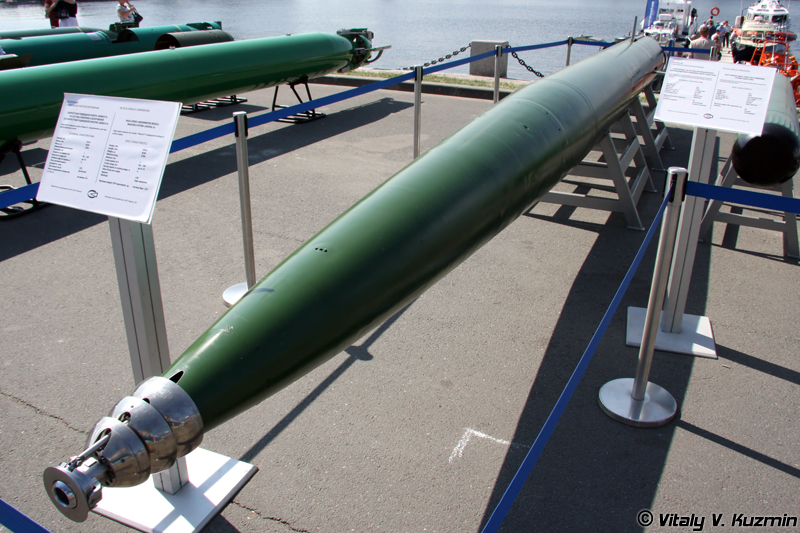
VA-111 Shkval
The Soviets continued to develop and use nuclear torpedoes throughout most of the Cold War, although details are sparse and confusing.4 The one spot where there is any clarity is the famous VA-111 Shkval supercavitating torpedo. This weapon uses a bubble of gas to travel through the water at over 200 kts, far faster than any conventional torpedo. The idea behind it is to give Soviet submarines a way of shooting back at NATO boats that took them by surprise, hopefully hitting their attackers before the incoming torpedoes reached them. The early versions had nuclear warheads, probably necessary to compensate for the inaccuracy of a torpedo that moves far too fast for either wire guidance or any form of conventional homing. The nuclear Shkvals, like all other Soviet nuclear torpedoes, were retired in the early 90s, although conventional models remain in service. These apparently run out at high speed, then slow to conventional torpedo speed (60 kt or so) to home in on their targets. This is better than the alternative of being unable to actually get close to the target, but does impose a significant limitation on the weapon. I'm unsure if it can go back to high speed after homing or not.
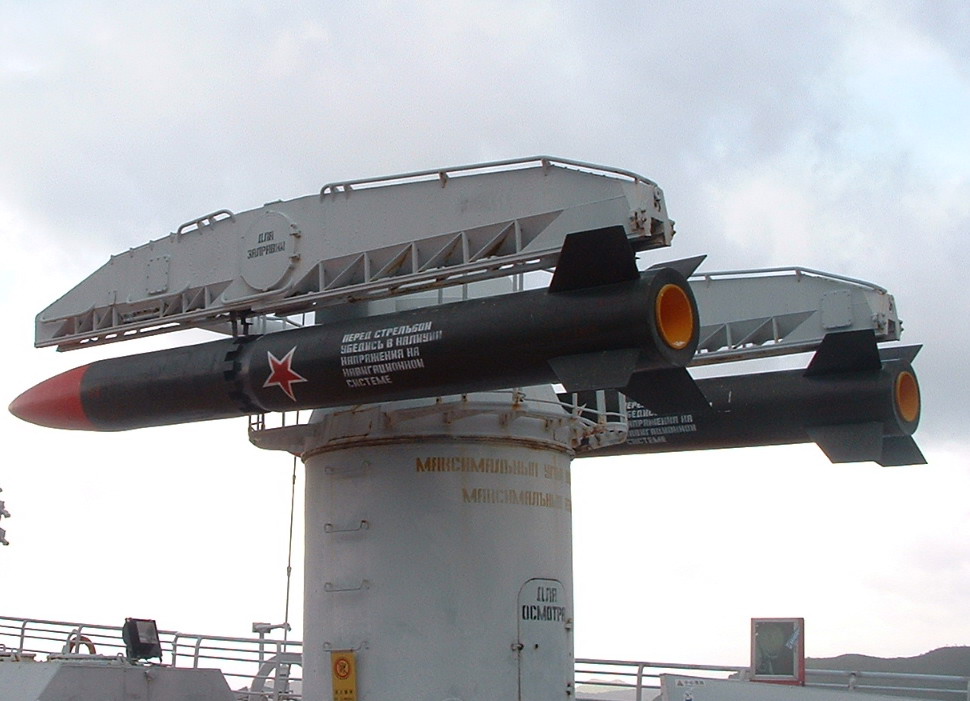
RPK-1/SUW-N-1
The Soviets also made extensive use of anti-submarine nukes from their surface ships. The first of these systems was the RPK-1/SUW-N-1, a ballistic rocket equipped with a nuclear depth bomb. It had three times the range of the fairly similar ASROC, but had no torpedo mode and was only fitted to the Moskva and Kiev class carriers. It was followed by the SS-N-14 "Silex", a weapon broadly similar to Ikara, but with much longer range. Given the limitations of Soviet sonars, this was presumably intended to attack targets spotted by the ship's helicopter. The successor to the SS-N-14, the RPK-2/SS-N-15, was a rather unique system. It was a rocket fired from a torpedo tube, much like SUBROC or Sea Lance, but the Soviets deployed it on both submarines and from above-water tubes on their surface ships. This is like nothing ever dreamed of in the West, where very few 21" torpedo tubes survived on surface ships into the 1960s, but it worked well enough that they repeated the technique for the follow-on RPK-6/SS-N-16. Both of these weapons could carry either an NDB or a homing torpedo, to ranges of around 30 nm and 60 nm respectively.5
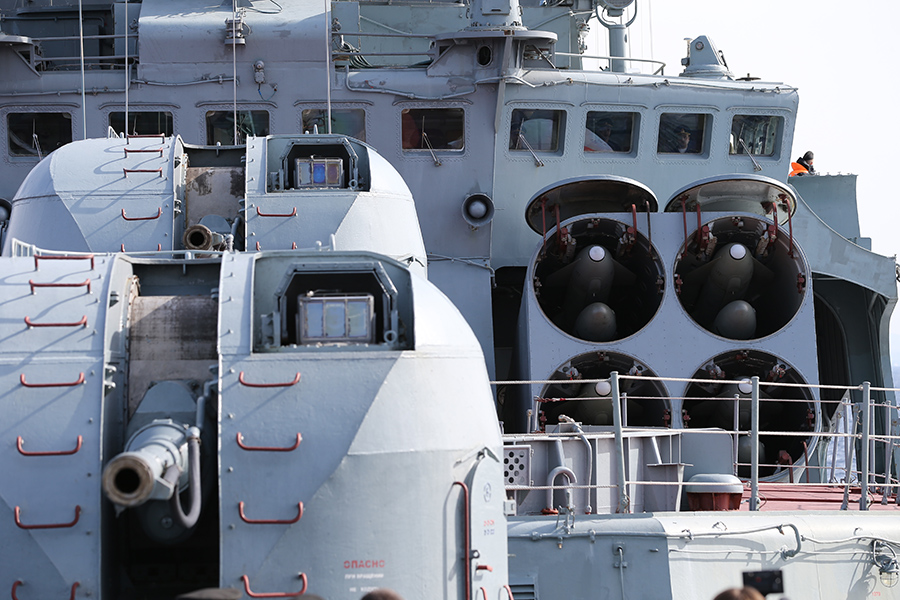
SS-N-14 missiles in their launch tubes on a Russian destroyer
But while the list of nuclear ASW weapons is both extensive and fascinating, there were also plans to deploy underwater nuclear weapons in other roles. Specifically, both sides of the Cold War had plans to use nuclear torpedoes to attack land targets. We'll take a look at these, and at other uses of submarine-launched nuclear weapons in the strike mission, later on.
1 There was some discussion of longer ranges, but they weren't seen as necessary because most ships carried some form of helicopter, either the unmanned DASH or manned. ⇑
2 As originally published, this post claimed that the British also carried NDBs for use with the Ikara launchers on their frigates, but I later discovered that this isn't true. A nuclear Ikara was proposed, but cancelled before development got very far. ⇑
4 Polmar and Moore's Cold War Submarines has some, as does NavWeps. They conflict on many things. ⇑
5 As far as I can tell, no other power, including China or France, has ever deployed nuclear weapons in the ASW role, although French patrol aircraft may have carried US NDBs. ⇑

Comments
4 NDB rockets + 1 training round + 2 empty cells = 7 filled cells out of 8. What was in the other one?
Those figures are for a Spruance-class, which had 2 8-round ring magazines below the box launcher. Typical loadout was 8 torpedo rounds in the pepperbox, plus the seven you've identified in the rings, plus 9 more torpedo rounds in the rings. (Source on that is the book Electric Greyhounds. Unfortunately, Sumrall doesn't seem to say what the standard loadout on the FRAMs was.)
A few sources I've read credit all of SS-N-14/15/16 with anti-shipping modes too. That kinda makes sense for SS-N-14 (and indeed, I swear I've seen photos somewhere of what looks like an SS-N-14 round with an IR seeker on the nose and an underslung bomb), but for the other two it seems really weird - Udaloy II, Kirov and Slava have better anti-ship missiles available, and at least the latter two have SAMs with a surface mode, so why bother? Is there anything to that, or is it typical Western confusion about Soviet/Russian systems?
I don't really know. I'd guess that "anti-shipping mode" means "you can set the torpedo to home in on a surface ship", which isn't a property of all homing torpedoes, although most have it these days. I know that ASROC or VLASROC (maybe both, can't remember details) had that mode. And a shallow NDB will of course kill any ship nearby.
There's a lot of conflicting information on the SS-N-14's anti-shipping mode, at least in the English-language reporting. All sources indicate that the missile is expected to directly impact the target, possibly using an IR seeker. Disagreement is over whether it uses a secondary 185 kg shaped charge warhead in the missile airframe, or a ~600 kg bomb carried in place of the torpedo.
In the former case, I've found one source that implies the torpedo is also carried to impact and adds its fuel and warhead to the general explodiness of the event, and none saying that it drops the torpedo for a secondary attack. Both are in principle possible, but dropping the torpedo would mean the missile has to be flyable both with and without the torpedo, a non-trivial design challenge.
In no case would I expect this to be a particularly useful weapon against a large and/or heavily-defended target, except possibly for a bit of defense saturation. Against a 1970s-style frigate with limited missile defenses, sure, might as well use that rather than waste an SS-N-12 or the like.
Interesting. I'm a bit surprised they'd incorporate that kind of thing into an ASW weapon, but who knows the Soviet military mind. Definitely still going with the SS-N-15/16 using the torpedo. If you want an alternate anti-ship version of that, just use Harpoonski or whatever else is fitted for torpedo tube launch.
Slightly off-topic but why does that pepperbox launcher have clovers painted on the lower cells? Are those the "lucky rockets"?
@Quanticle: Luck of the Irish!
Of course, that luck didn't Joe Kennedy himself much good, but...
At least they didn't paint the name on the transom green like everyone seems to do now
For those who like to keep track of my edits, I just found out that Ikara never actually had a nuclear-armed version contrary to wikipedia, and have deleted the relevant verbiage and added a footnote.